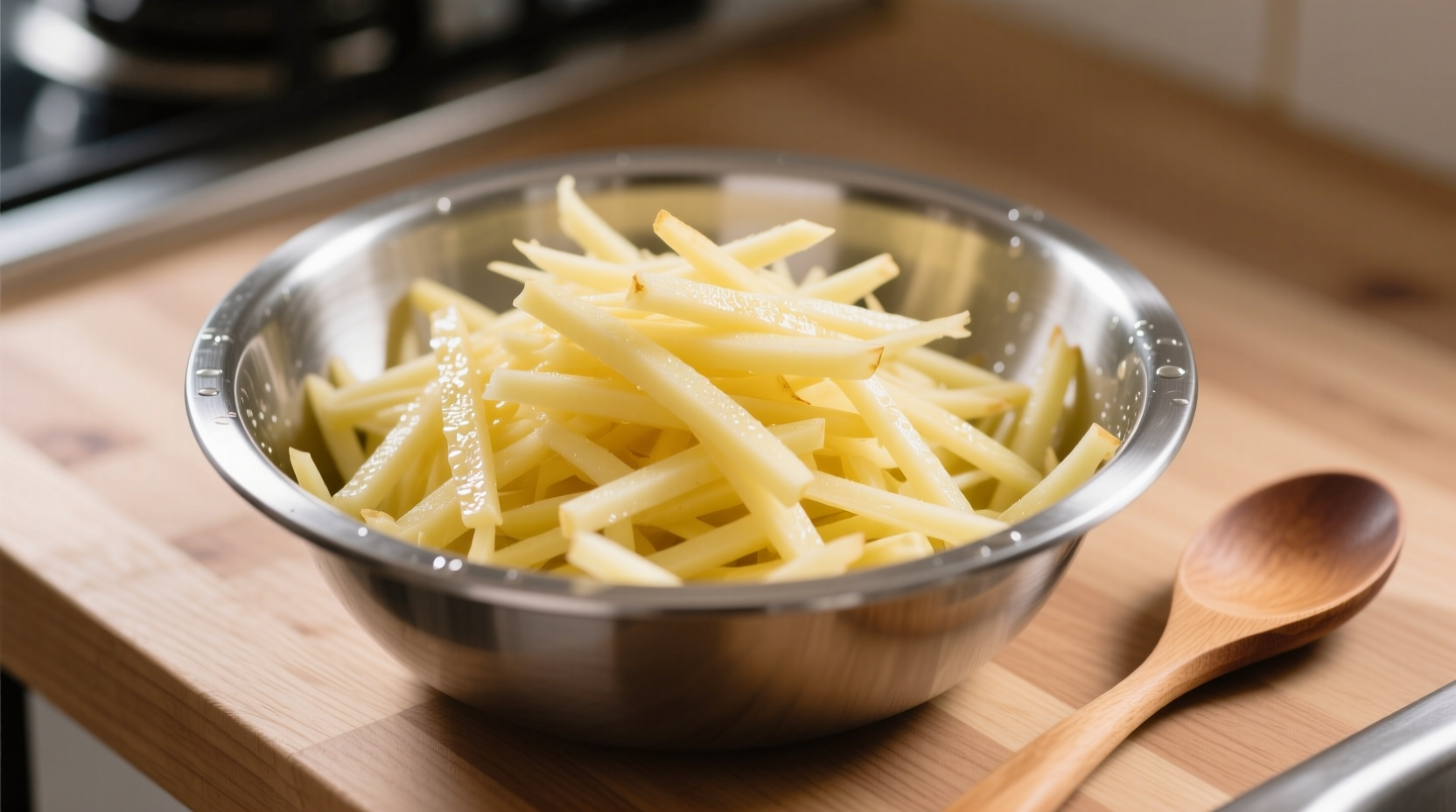The Right Tools for Shredding Potatoes: What Works Best
When preparing shredded potatoes, selecting the proper tool makes all the difference in texture and cooking results. Professional kitchens rely on three primary methods, each with distinct advantages depending on your recipe needs.
| Tool | Shred Size | Best For | Time Required |
|---|---|---|---|
| Box Grater (large holes) | 1/8 inch strips | Latkes, hash browns | 3-5 minutes |
| Food Processor (shredding disc) | Uniform 1/8 inch | Large batches, consistent texture | 1-2 minutes |
| Mandoline Slicer | Precise 1/8 inch | Professional results, even cooking | 2-3 minutes |
Step-by-Step Potato Shredding Process
Follow these professional chef techniques to achieve perfect shredded potatoes every time. Start with starchy varieties like Russets which contain less moisture and create crispier results when cooked.
Preparation Essentials
Wash potatoes thoroughly under cold water to remove dirt. Peel if desired (skin-on provides extra texture for some recipes). Keep potatoes submerged in cold water until ready to shred to prevent premature oxidation.
The Shredding Technique
Using a box grater: Secure the grater on a stable surface with non-slip mat underneath. Hold potato firmly and use downward motion with even pressure. For food processors: Cut potatoes into processor feed tube size, use pulse function to maintain shred integrity. Always work with dry potatoes for cleaner cuts—moisture causes slipping and uneven shredding.

Preventing Browning: The Science Behind It
Potatoes contain polyphenol oxidase enzymes that react with oxygen, causing discoloration. This doesn't affect safety but impacts appearance and can alter flavor. The USDA recommends immediate submersion in cold water with acid to prevent browning.
For every quart of water, add one tablespoon of lemon juice or white vinegar. Soak shredded potatoes for 15-30 minutes, then drain and pat completely dry before cooking. Never use salt water—it draws out too much moisture, preventing crispiness.
Popular Dishes Using Shredded Potatoes
Understanding which recipes require shredded (versus grated) potatoes ensures optimal texture and cooking results. Shredded potatoes maintain structure better during cooking, creating that desirable crispy exterior with tender interior.
Latkes (Potato Pancakes)
Traditional Jewish potato pancakes require shredded potatoes for proper binding and texture. Combine with egg, onion, matzo meal or flour, and pan-fry until golden brown. The thicker shreds create air pockets that result in crispier edges.
Hash Browns
For diner-style hash browns, shredded potatoes provide the perfect balance of crisp exterior and fluffy interior. Press shredded potatoes firmly into the pan to create a cohesive cake that flips easily. Restaurants typically use a 1:4 potato-to-onion ratio for optimal flavor.
Potato Rosti
This Swiss specialty requires shredded potatoes pressed into a thick pancake and cooked slowly. The shredded texture allows for even cooking throughout while developing a golden crust. Traditional rosti contains no binders—just potatoes, salt, and pepper.
Storage Guidelines for Shredded Potatoes
Proper storage maintains quality and prevents waste. According to food safety guidelines from the National Center for Home Food Preservation, shredded potatoes can be stored using these methods:
- Short-term (1-2 days): Submerged in acidulated water in airtight container in refrigerator
- Medium-term (3-5 days): Par-cooked, cooled, and stored in freezer bags with air removed
- Long-term (2-3 months): Fully cooked and frozen in portion-sized containers
Never store raw shredded potatoes at room temperature—this creates ideal conditions for bacterial growth. Always label containers with preparation date.
Avoiding Common Shredding Mistakes
Professional chefs consistently avoid these pitfalls when preparing shredded potatoes:
- Using waxy potatoes: Varieties like Yukon Gold or red potatoes contain more moisture, resulting in soggy cooked dishes
- Skipping the water bath: Leads to discoloration and potential flavor changes
- Over-handling after shredding: Causes potatoes to break down and become mushy
- Not drying thoroughly: Excess moisture prevents proper browning during cooking
For restaurant-quality results, always use a clean kitchen towel to squeeze out excess water after the acidulated water bath. This simple step dramatically improves crispiness.
Shredded vs. Grated Potatoes: When to Use Each
Understanding the difference between shredded and grated potatoes is crucial for recipe success. While often used interchangeably, these preparations serve distinct culinary purposes:
- Shredded potatoes (1/8 inch strips): Maintain structure, ideal for pan-fried dishes requiring crisp texture
- Grated potatoes (finer, almost paste-like): Better for binding in croquettes or when moisture extraction is critical
For most American breakfast hash browns and traditional latkes, shredded is preferred. For Korean gamja-jeon (potato pancakes), a finer grate works better. Always follow recipe specifications for best results.











 浙公网安备
33010002000092号
浙公网安备
33010002000092号 浙B2-20120091-4
浙B2-20120091-4